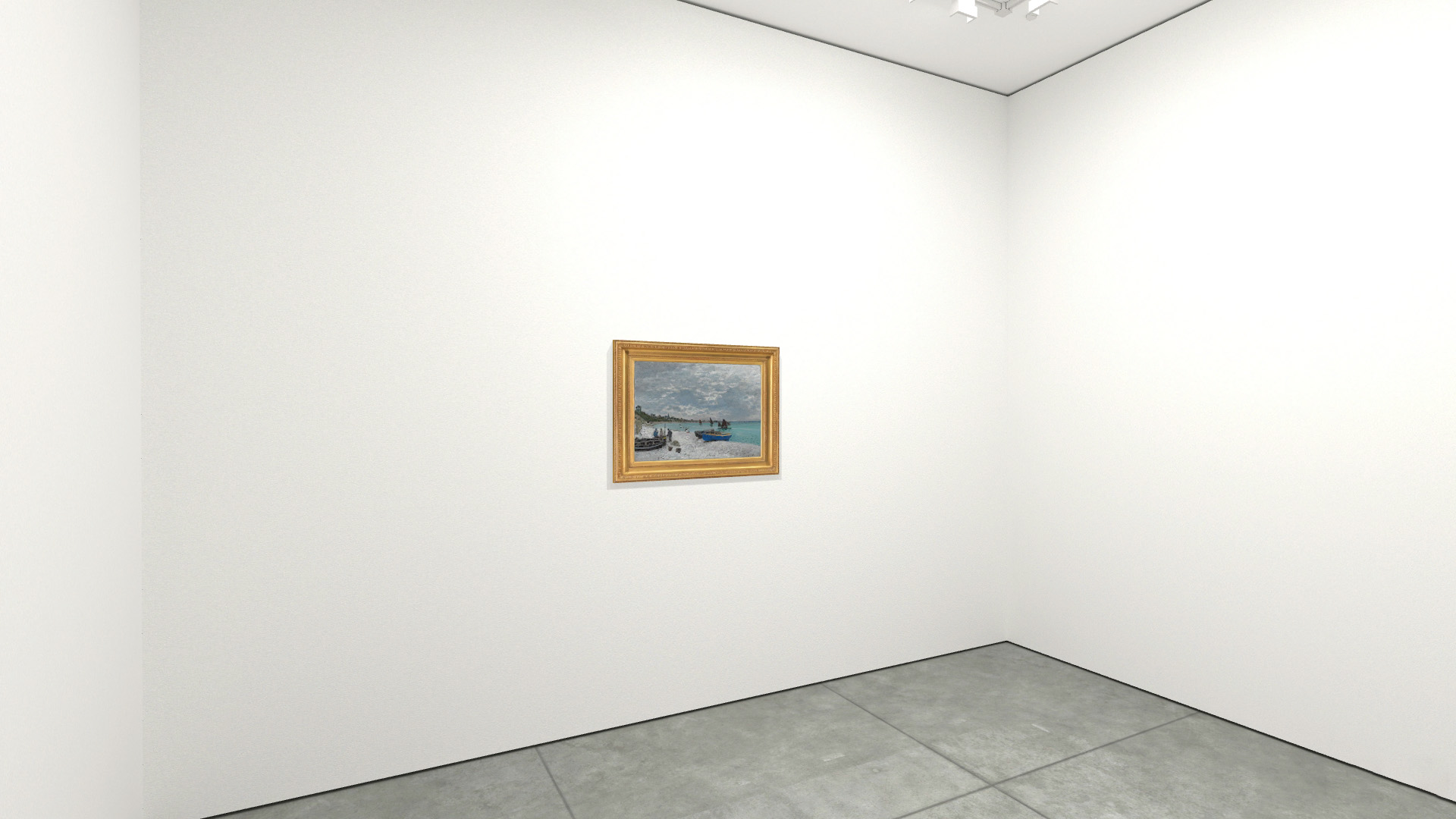

In the summer of 1867, Monet painted a number of works en plein air at Sainte-Adresse, including the Art Institute’s “Beach at Sainte-Adresse” and its possible pendant, “ Regatta at Sainte-Adresse” (1867; Metropolitan Museum of Art, New York). Although there is no evidence that he wanted to exhibit or sell these paintings as a pair, they are similar in size and depict the same stretch of beach from approximately the same viewpoint. Both reference the coexistence of local and tourist life at Sainte-Adresse; however, the Art Institute’s overcast scene shows the beach at low tide, dominated by native fisherfolk and their dark-sailed working boats, while the Metropolitan Museum’s features urban tourists and white-sailed leisure yachts on a sunny day at high tide.
Monet may not have originally intended to foreground local fishermen and their crafts in the Chicago painting. Infrared and X-ray images reveal that, in an earlier stage, he included three well-dressed tourists along the shoreline and a number of white-sailed pleasure boats in the water at right. Subsequently painting out these indicators of the leisure class and replacing them with three fishermen and their beached boats at left, the artist complicated the meaning of this work and, more significantly, the dialogue it shares with the New York picture. Though he may have begun these paintings as experiments in documenting the same subject under changing meteorological conditions, Monet deliberately revised the Art Institute’s canvas, possibly in an attempt to speak to the complex social and physical transformations taking place in Sainte-Adresse at this time.










